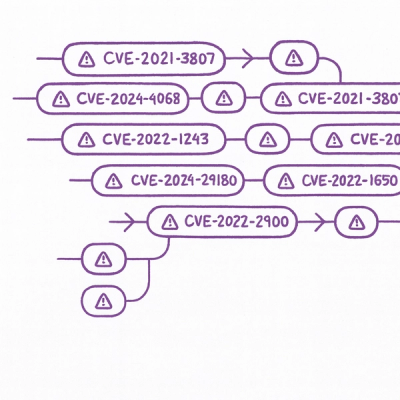
Security News
Static vs. Runtime Reachability: Insights from Latio’s On the Record Podcast
The Latio podcast explores how static and runtime reachability help teams prioritize exploitable vulnerabilities and streamline AppSec workflows.
cypress-sql
Advanced tools
cypress utility with custom commands to communicate with MS SQL server
cypress-sql is a plugin that allows you to connect with MS SQL database, perform SQL queries, and execute stored procedures using a connection pool. It is specifically designed for use with the Cypress testing framework.
You can install Cypress-SQL using npm:
npm install cypress-sql --save
To use Cypress-SQL plugin, you need to invoke it through cypress.config.js in your Cypress Project.
Connect with the MS SQL database with below configuration , for more help look into node-mssql configuration,
In cypress.env.json file, create the configuration for db as shown
"db":{
"server": "your-server",
"database": "your-database",
"user": "your-username",
"password": "your-password",
}
If there are no parameters specified for connection pool, it will take the default connection pool. Look at the configuration section for the example
In your cypress.config.js file, Import the Cypress-SQL module:
const sql = require('cypress-sql');
module.exports = defineConfig({
e2e:{
setupNodeEvents(on, config) {
on('task', sql.loadDBPlugin(config.env.db));
},
}
})
In cypress/support/e2e.js. Register the commands in the support file as shown below:
const sql = require('cypress-sql');
sql.loadDBCommands();
This plugin provides three commands to use it for the tests
cy.sql(query) or cy.sql(stored_procedure)cy.sqlBatch(query, batch_size)cypress-sql-server package - cy.sqlServer(query)In your cypress tests
it('test case with cypress-sql', ()=>{
let query = "select 'HELLO_WORLD' as dummy_record";
cy.sql(query).then((response)=>{
expect(response.dummy_record).to.equal('HELLO_WORLD');
})
});
#### Note - Batch query response processing will be different
it('test case with cypress-sql batch', ()=>{
/* the select query needs to follow certian format for batch processing */
let query = "select * FROM 'TABLE_NAME' order by id ";
let db2 = {
{
"server": "your-server",
"database": "your-database-2",
"user": "your-username",
"password": "your-password",
}
}
cy.sqlBatch(query, 100, db2, (response)=>{
// response will be an array of records
})
});
it('test case with cross compatibility for existing cypress-sql-server package', ()=>{
let query = "select 'HELLO_WORLD' as dummy_record";
cy.sqlServer(query).then((response)=>{
expect(response[0]).to.equal('HELLO_WORLD');
})
});
Now supports querying multiple databases utilizing connection pool
let db1 = {
"server": "your-server",
"database": "your-database-1",
"user": "your-username",
"password": "your-password",
}
let db2 = {
{
"server": "your-server",
"database": "your-database-2",
"user": "your-username",
"password": "your-password",
}
}
it('multi database querying test', () => {
cy.sql("SELECT DB_NAME() AS current_database;", db1 ).then((response)=>{
cy.log(response.current_database);
})
cy.sql("SELECT DB_NAME() AS current_database;", db2 ).then((response)=>{
cy.log(response.current_database);
})
cy.sql("SELECT DB_NAME() AS current_database;").then((response)=>{
/* use default database connection when initalized in cypress.config.js
when no specific db is passed */
cy.log((response.current_database));
})
})
Cypress-SQL can be configured using the following options:
maxConnections: Maximum number of connections in the pool (default: 10)minConnections: Minimum number of connections in the pool (default: 0)idleTimeoutMillis: Maximum time (in milliseconds) that a connection can be idle before being removed from the pool (default: 30000)acquireTimeoutMillis: Maximum time (in milliseconds) to wait for a connection from the pool (default: 30000)You can configure these options by passing an object to the connect method:
const connectionConfig = {
server: 'your-server',
database: 'your-database',
user: 'your-username',
password: 'your-password',
pool: {
max: 10,
min: 0,
idleTimeoutMillis: 30000
acquireTimeoutMillis: 30000
},
};
This project is licensed under the MIT License. See the LICENSE file for details.
Contributions are welcome! Please refer to the CONTRIBUTING.md file for guidelines.
Cypress-SQL is inspired by node-mssql and cypress-sql-server.
If you have any questions, issues, or feature requests, please open an issue.
FAQs
cypress utility with custom commands to communicate with MS SQL server
The npm package cypress-sql receives a total of 0 weekly downloads. As such, cypress-sql popularity was classified as not popular.
We found that cypress-sql demonstrated a not healthy version release cadence and project activity because the last version was released a year ago. It has 1 open source maintainer collaborating on the project.
Did you know?

Socket for GitHub automatically highlights issues in each pull request and monitors the health of all your open source dependencies. Discover the contents of your packages and block harmful activity before you install or update your dependencies.

Security News
The Latio podcast explores how static and runtime reachability help teams prioritize exploitable vulnerabilities and streamline AppSec workflows.

Security News
The latest Opengrep releases add Apex scanning, precision rule tuning, and performance gains for open source static code analysis.

Security News
npm now supports Trusted Publishing with OIDC, enabling secure package publishing directly from CI/CD workflows without relying on long-lived tokens.